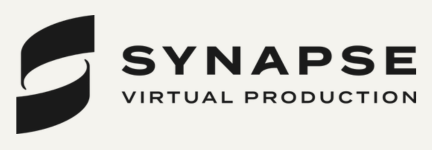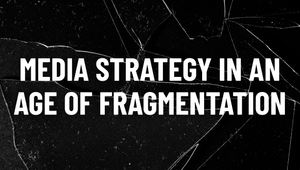
Agentic AI Is Making Space for the Biggest Creative Impact

Artificial intelligence is reshaping multiple industries and workflows at breakneck speed. Just as we get used to it in one form – generative AI – another emerges. The one shaking up the industry right now is agentic AI, and Eric Walzthöny Kreutzberg, CTO of SmartAssets, defines it as “AI that has the agency to operate autonomously, make decisions, and adapt in complex marketing or general environments with minimal human oversight.”
Agentic AI is distinct from the generative. While the latter works by creating content on demand, “agentic AI is able to decide which content to create for whom and when, and is also able to execute an entire strategy behind it,” explains Eric.
“The key driver in agentic AI,” he continues, “is that you have specialised models for your use case and industry, for specific verticals. So you could, for example, have one that is an expert in campaign optimisation, and you have a planner agent that’s a very big model, and it's very smart, and it's able to break down your request into smaller pieces and then give it to smaller, specialised models to action on them.”
Getting more granular, Eric points to the agentic AI use cases employed by SmartAssets, like within the analytics department. Through rule exploration, SmartAssets extracts information from classical machine learning to more psychological attributes as well as neuromarketing and psychometrics in order to constantly add new rules or new features that we want to extract. “We're able to employ agents to automatically generate rules from scientific research and then help us at the implementation phase,” he summarises.
Agentic AI aids creative impact and it’s something SmartAssets is helping clients to harness already by optimising marketing campaigns. “We provide sets of recommendations that won’t deviate from the original creative,” says Eric. “It’s minor adjustments like adapting the language or shifting the logo somewhat, mostly cosmetic things or maybe formatting or layout.”
One of the biggest benefits to brands is maximised or optimised KPIs. Instead of having humans conduct mind-numbing repetitions by hand across multiple assets, an agent trained on the brand’s assets and guidelines can conduct these small adjustments with ease and care.
The Human Loop
Eric says that the “human loop” is important here: “People want to know what is being produced and how it's being edited so it has to go through cycles of refinement. But the key outcome is that it should make everything smoother and efficient.”
“We’re not at the true point of agentic yet,” cautions Eric, adding that there are consistent releases of better and larger models on an almost weekly basis. “We're getting very close right now. What I see in the next six months is human intervention becoming less needed, and we’ll have to define workflows less and less, because agents will be able to adapt specifically to industries and verticals.”
By embracing agentic, teams will be able to benefit from the speed and scale of its capabilities. “You’re able to generate and test an incredible volume of creative assets in minutes instead of days and weeks… It's continuously learning, so it's able to take in the real-time data, feed it back, and improve campaign performance.” It's also resource efficient, meaning that smaller teams are able to manage larger, more complex campaigns with ease.
Trust and authenticity are brands’ lingua franca and so working alongside AI to preserve both remains a priority. “What you could do is embed the brand values in the logic of the AI, train or feed your AI with a strong style guide which suggests a brand voice and the rule to follow cultural and ethical guidelines,” Eric says.
Additionally, “you can also set human checkpoints. Let's say that this agent handles 80% of your personalisation – you can ensure that there's a final review by a human team member to maintain tone of voice and brand consistency. You can also start with data transparency, where you only personalise data that is truly relevant to the customer, so the messaging feels more helpful than invasive.”
If all this sounds like there’s still a sizable part for humans to play in how agentic AI is implemented and operated, that’s because there is. “It's not a replacement,” insists Eric. “It's supposed to make your life easier but you also decide how you want to best use it.”
As it’s a very fast-moving environment, with multiple new models released just last month with each one breaking the standard on what’s come before. “You need to be very agile in how you’re testing these models to ensure that they're tested according to how your brand or your company wants to use it,” Eric explains “Because maybe the ‘best’ model that's ranked number one is not the best for your brand because it hallucinates more or it's very aggressive and maybe you want a more conservative model that needs a more hands-on approach,” he adds.
The question soon to be facing brands won’t be about whether or not they have adopted agentic to aid creative impact. The more important scrutiny will be around the quality of its integration – the competitive edge balanced with enduring authenticity and brand trust that needs to be maintained in a turbulent market.












